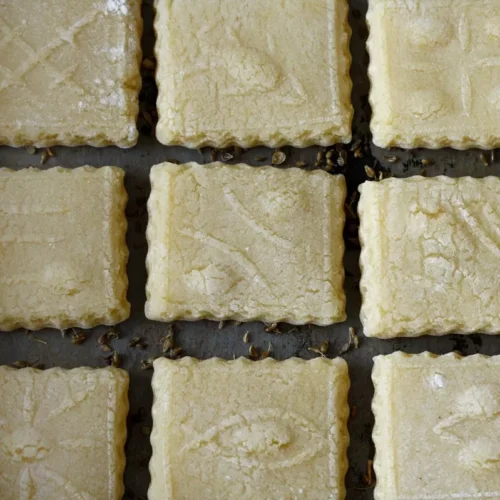
Springerle - German Anise Cookies
Ingredients
- Nonstick cooking spray for preparing the pan
- 1½ tablespoons crushed anise seeds
- 3½ cups 490 grams all-purpose flour, plus more for dusting
- 1 teaspoon baking powder
- 4 eggs
- 2 cups 400 grams granulated sugar
- ½ teaspoon vanilla extract
- ¼ cup 30 grams confectioners’ sugar
Instructions
Prepare the Pan
- Coat a large sheet pan with nonstick cooking spray, sprinkle evenly with the crushed anise seeds, and set it aside.
Mix the Dough
- In a bowl, stir together the flour and baking powder. In a stand mixer fitted with the paddle attachment, beat the eggs, granulated sugar, and vanilla on medium speed until frothy, about 5 minutes. Remove the bowl from the mixer and slowly incorporate the flour mixture until a thick, soft, and moist dough forms, about 2 minutes.
Roll Out the Dough
- On a lightly floured surface, roll out the dough to ¼ inch (6 mm) thick. Sift a light layer of confectioners’ sugar over the dough.
Emboss the Design
- Using a Springerle Mold: Lightly dust the mold with flour, tap off excess, and gently press it into the dough with constant, even pressure to transfer the design. Cut around each design with a small knife and transfer the cookies to the prepared sheet pan.
- Using a Springerle Pin: Lightly dust the pin with flour, tap off the excess, and firmly roll it over the dough. Cut around each design with a small knife and transfer the cookies to the prepared pan. If the design isn’t clear, gather the dough, briefly knead it, and try again.
Dry the Cookies
- Cover the cookies with a clean kitchen towel and let them dry at room temperature for at least 8 hours or overnight. As they dry, the anise seeds will adhere to the dough.
Bake the Cookies
- Preheat the oven to 250°F (120°C). Bake the cookies until the tops are pale brown, about 10 minutes. Let them cool on the pan on a wire rack.
Serve and Store
- For the best texture and flavor, enjoy the cookies the same day they’re baked. Store any leftovers in an airtight container at room temperature, but aim to eat them as soon as possible to savor their unique texture and flavor.
Tried this recipe?Let us know how it was!